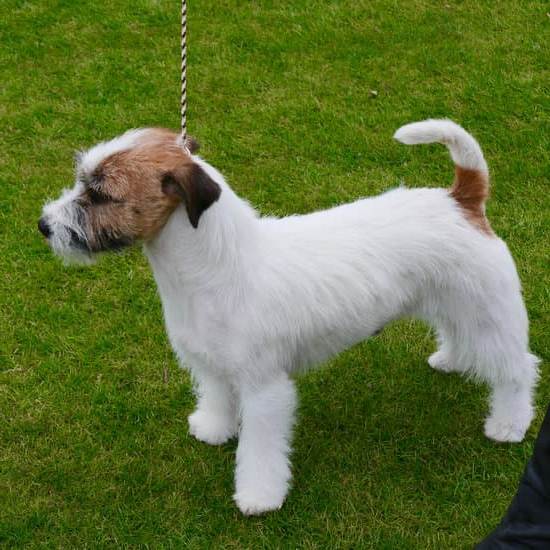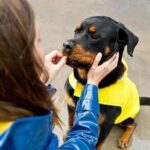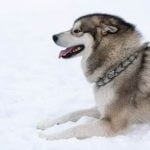Are you wondering how to train a dog to not bite when eating? Food aggression in dogs can be a common problem for many pet owners, but with the right training and techniques, it is possible to address this behavior. In this article, we will explore the root cause of food aggression in dogs and provide practical tips on how to train your dog to not bite when eating.
Understanding the root cause of food aggression in dogs is essential in addressing this behavior. Whether it stems from resource guarding, fear, anxiety, or past trauma, identifying the underlying reasons for food aggression is crucial in developing an effective training plan. By gaining insight into your dog’s behavior and triggers, you can implement strategies to prevent and manage food aggression during meal times.
In addition to understanding the root cause of food aggression, it is important to recognize the signs of this behavior in your dog. This includes growling, snarling, snapping, or even biting when approached while eating. By being able to identify these signs early on, you can take proactive steps to address and prevent food aggression in your dog.
Identifying Signs of Food Aggression in Your Dog
Food aggression in dogs can be a serious behavior problem that needs to be addressed as soon as possible. If left unattended, food aggression can lead to dangerous situations and even result in harm to humans or other pets. Therefore, it is crucial for dog owners to be able to identify the signs of food aggression in their pets.
Protective Behavior
One of the common signs of food aggression in dogs is protective behavior around their food. This can include growling, snarling, or even lunging at anyone who comes near their food while they are eating. Additionally, some dogs may show signs of guarding their food by standing over it or keeping their body close to the bowl.
Food Bowl Possessiveness
Dogs with food aggression may also exhibit possessive behavior towards their food bowl. They may become defensive when someone approaches them while they are eating from their bowl and might even try to move away with it.
Visible Stress or Anxiety
Another sign of food aggression in dogs is visible stress or anxiety during feeding time. Some dogs may exhibit behaviors such as trembling, panting, pacing, or showing the whites of their eyes while eating.
By being aware of these signs and behaviors, dog owners can take proactive steps to address and manage their pet’s food aggression before it escalates into a more serious issue. Understanding the root cause of this behavior can also help in developing an effective training plan on how to train a dog to not bite when eating.
Establishing a Feeding Routine to Prevent Food Guarding
When it comes to preventing food guarding in dogs, establishing a consistent feeding routine is essential. Dogs thrive on predictability and structure, so providing them with a regular schedule for meals can help reduce the likelihood of food aggression. Here are some key steps to consider when setting up a feeding routine for your dog:
- Determine the appropriate portion sizes and feeding times based on your dog’s breed, age, and activity level. It’s important to consult with your veterinarian to ensure that you are meeting your dog’s nutritional needs.
- Choose a designated feeding area for your dog and stick to that specific location for all meals. This will help create a sense of predictability and routine for your pet.
- Avoid free-feeding or leaving food out all day, as this can contribute to food guarding behavior. Instead, serve your dog’s meals at set times during the day, allowing them ample time to eat without feeling rushed or threatened.
By implementing a structured feeding routine, you can help prevent food aggression in your dog and create a more harmonious mealtime experience for both you and your pet.
Additionally, it is important to supervise your dog while they eat and ensure that they are not displaying any signs of food aggression. This allows you to address any concerning behaviors early on and intervene as needed.
By following these simple yet effective strategies, you can set the stage for a positive mealtime experience and minimize the risk of food guarding in your canine companion.
Overall, establishing a feeding routine is an integral part of training a dog to not bite when eating. By providing structure, consistency, and supervision during mealtimes, you can help prevent food aggression in your furry friend.
Using Positive Reinforcement Training to Address Food Aggression
Food aggression in dogs can be a concerning behavior that needs to be addressed promptly and effectively. Positive reinforcement training can be a valuable tool in addressing food aggression in dogs. This training method focuses on rewarding the dog for good behavior rather than punishing them for bad behavior. By using positive reinforcement, you can effectively train your dog to not bite when eating.
One effective way to use positive reinforcement training to address food aggression is by rewarding your dog for calm and non-aggressive behavior during meal times. This can be done by offering treats or praise when your dog exhibits the desired behavior, such as waiting patiently for their food or allowing you to handle their bowl without any signs of aggression.
Consistency is key when using positive reinforcement training to address food aggression in dogs. It’s important to establish clear rules and expectations for meal times and consistently reward the desired behavior. Over time, your dog will learn that calm and non-aggressive behavior results in positive rewards, which will help reduce their food aggression.
In addition to using positive reinforcement, it’s important to also address any underlying issues that may be contributing to your dog’s food aggression. This may include seeking professional help from a certified dog trainer or behaviorist who can provide guidance on how to train a dog to not bite when eating and address any other behavioral issues that may be present.
By taking a comprehensive approach to addressing food aggression, you can help ensure a safe and stress-free eating environment for your dog.
| Positive Reinforcement Training | Addressing Food Aggression |
|---|---|
| Rewarding calm behavior | Important in reducing food aggression |
| Consistency | Key factor in using positive reinforcement effectively |
| Seeking Professional Help | If needed, consider consulting a certified trainer or behaviorist |
Implementing Desensitization and Counter-Conditioning Techniques
Desensitization and counter-conditioning are two effective techniques used to address food aggression in dogs. These methods involve changing your dog’s response to specific triggers, such as someone approaching their food bowl, by gradually exposing them to the trigger in a positive and controlled manner.
Desensitization involves slowly introducing the trigger at a low intensity and gradually increasing it over time, while counter-conditioning focuses on changing your dog’s emotional response to the trigger from negative to positive. For example, if your dog growls when someone approaches their food, you can start by having the person stand at a distance where the dog doesn’t react aggressively, then gradually move closer as the dog becomes more comfortable.
It’s important to use positive reinforcement during desensitization and counter-conditioning training. This means rewarding your dog with treats or praise when they display calm behavior around their food, and avoiding punishment or negative reinforcement which can exacerbate food aggression.
One effective method is to hand-feed your dog their meals as this can help build trust and reduce anxiety around food. By associating people near their food with positive experiences, such as getting treats or attention, you can help your dog overcome their food aggression over time.
| Desensitization | Counter-Conditioning |
|---|---|
| Involves gradually exposing the trigger at low intensity | Focuses on changing the emotional response from negative to positive |
| Rewards calm behavior with treats or praise | Avoids punishment/negative reinforcement |
Seeking Professional Help for Persistent Food Aggression
If your dog’s food aggression persists despite your best efforts to address it, seeking professional help may be necessary. A certified dog trainer or behaviorist can offer valuable insights and guidance on how to train a dog to not bite when eating.
Professional trainers and behaviorists are equipped with the knowledge and experience to assess the root cause of your dog’s food aggression. They can create a personalized training plan tailored to your dog’s specific needs, taking into account factors such as breed, age, and previous experiences.
During professional training sessions, you will learn effective techniques for managing and modifying your dog’s behavior. Trainers may also provide hands-on demonstrations and offer practical advice for implementing these methods at home. They can help you understand the underlying triggers of food aggression and teach you how to respond appropriately in these situations.
In some cases, a behaviorist may recommend a combination of behavior modification techniques, medication, and ongoing support to address severe food aggression in dogs. It is important to remain committed to consistent training and practice patience as you work towards overcoming your dog’s food guarding behavior with the guidance of a professional.
Creating a Safe and Stress-Free Eating Environment for Your Dog
Eliminate Potential Triggers
One important step in creating a peaceful eating environment for your dog is to eliminate potential triggers that may contribute to food aggression. This can include keeping other pets or young children away from the feeding area during meal times, as well as ensuring that there are no sudden loud noises or disturbances that could startle your dog while eating.
Provide Adequate Space
Another key aspect of a stress-free eating environment is providing your dog with adequate space while they eat. Make sure that their feeding area is quiet and free from any distractions. Additionally, ensure that the feeding area is not too close to high-traffic areas in your home, as this can cause anxiety for some dogs.
Use Special Feeding Bowls or Mats
Utilizing specialized feeding bowls or mats can also help create a calm atmosphere for your dog during meal times. There are various products available on the market designed to slow down fast eaters or reduce gulping, which can contribute to food aggression. These tools can also make the process of eating more enjoyable for your furry friend.
By taking these steps to create a safe and stress-free environment for your dog during meals, you can help alleviate their food aggression and promote positive behavior around food. Remember to be patient and consistent with these measures, as it may take time for your dog to adjust and feel comfortable during feeding times.
Importance of Consistent Training and Patience in Overcoming Food Aggression
Consistency and patience are key when it comes to addressing food aggression in dogs. It is important to understand that this behavior cannot be changed overnight and will require ongoing training and patience from the dog owner. With the right approach, it is possible to help your dog overcome their food aggression and create a stress-free eating environment for them.
One of the most important aspects of consistent training is establishing a feeding routine for your dog. This means feeding them at the same time each day and in the same location. By setting a regular schedule, you can help prevent food guarding behaviors from developing in the first place.
Consistency also extends to the way you interact with your dog during meal times. It’s crucial to maintain a calm and assertive demeanor when feeding your dog, as any nervous or anxious energy from you can exacerbate their food aggression.
Positive reinforcement training is another effective way to address food aggression in dogs. This involves rewarding good behavior with treats or praise, while ignoring or redirecting negative behavior. For example, if your dog shows signs of food aggression when eating, such as growling or snapping, try using a command like “leave it” and then rewarding them when they comply. Over time, they will learn that exhibiting non-aggressive behavior results in positive outcomes.
It’s also essential to have patience throughout this process. Changing a dog’s behavior takes time and consistency, so it’s important not to become frustrated or lose hope. Remember that every small step forward is a victory in overcoming food aggression in your dog. With consistent training and patience, coupled with love and understanding, it is possible to train a dog to not bite when eating.
Exploring Alternative Feeding Methods for Dogs With Severe Food Aggression
If your dog has severe food aggression, it may be necessary to explore alternative feeding methods to ensure their safety and the safety of others. Severe food aggression can pose a serious risk to both humans and other animals in the household, so it’s important to address the issue effectively. Here are some alternative feeding methods that can help minimize the risk of your dog biting when eating:
- Slow Feeder Bowls: Slow feeder bowls are designed with obstacles and ridges that make it more difficult for dogs to gulp down their food quickly. This can help prevent them from becoming overly protective of their food while eating.
- Interactive Feeders: Interactive feeders require dogs to work for their food, such as by using puzzle toys or treat dispensing devices. This not only slows down their eating process but also redirects their focus away from guarding their food.
- Hand Feeding: Hand feeding can be an effective way to build trust with a dog that exhibits severe food aggression. By hand feeding small portions of food at a time, you can gradually teach your dog that they don’t need to be defensive during meal times.
These alternative feeding methods may require some patience and consistency, but they can be valuable tools in managing severe food aggression in dogs. It’s important to consult with a professional trainer or behaviorist for guidance on implementing these methods effectively.
In addition to exploring alternative feeding methods, it’s crucial to continue practicing positive reinforcement training and creating a safe eating environment for your dog. Consistency and patience are key in overcoming severe food aggression, so it’s essential to remain committed to addressing this issue for the overall well-being of your furry companion.
Conclusion and Recap of Key Tips for Training a Dog to Not Bite When Eating
In conclusion, addressing food aggression in dogs requires a combination of understanding the root cause, identifying signs, establishing a feeding routine, using positive reinforcement training, and implementing desensitization and counter-conditioning techniques. It is important to create a safe and stress-free eating environment for your dog and to seek professional help if the food aggression persists.
Consistent training and patience are crucial in overcoming food aggression, and exploring alternative feeding methods may be necessary for dogs with severe food aggression.
The key to training a dog to not bite when eating lies in understanding the underlying reasons for their behavior and taking proactive steps to address it. By using positive reinforcement training, desensitization techniques, and creating a consistent feeding routine, you can help your dog overcome food aggression. It is also important to remain patient and consistent throughout the training process.
In summary, training a dog to not bite when eating requires dedication and an understanding of your dog’s individual needs. By following the tips outlined in this article and seeking professional help if needed, you can work towards ensuring that meal times are stress-free for both you and your furry friend. With time and effort, it is possible to modify your dog’s behavior and create a positive eating experience for everyone involved.
Frequently Asked Questions
Why Does My Dog Bite When Eating?
Dogs may bite while eating due to food-related aggression, resource guarding, or anxiety. Some dogs are protective of their food and feel threatened when approached during mealtime, leading them to bite out of fear or defense.
How Do You Punish a Dog for Food Aggression?
Punishing a dog for food aggression is not recommended as it can worsen the behavior and erode trust between you and your pet. Instead, focus on positive reinforcement training, create a feeding schedule, and work with a professional trainer to address the underlying issues.
How Do I Stop My Dogs From Fighting When I Eat?
To stop dogs from fighting when you eat, you can start by feeding them separately to avoid competition over food. Additionally, train them to have good manners around food, use positive reinforcement for good behavior, and provide mental stimulation to keep them occupied during mealtimes.

Welcome to the blog! I am a professional dog trainer and have been working with dogs for many years. In this blog, I will be discussing various topics related to dog training, including tips, tricks, and advice. I hope you find this information helpful and informative. Thanks for reading!





